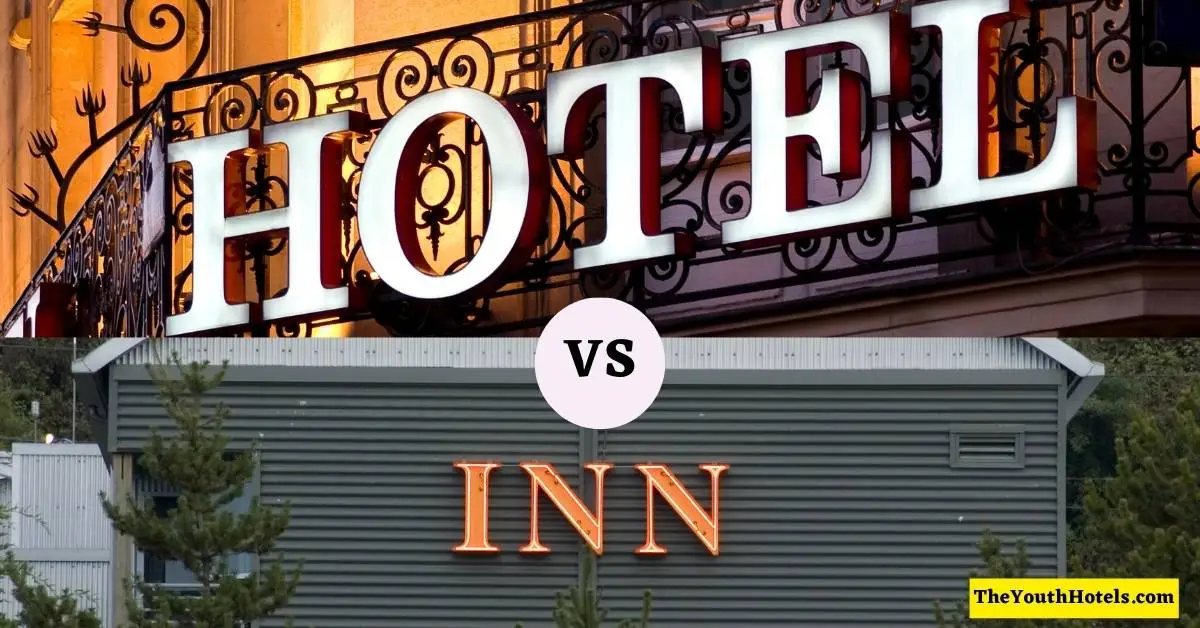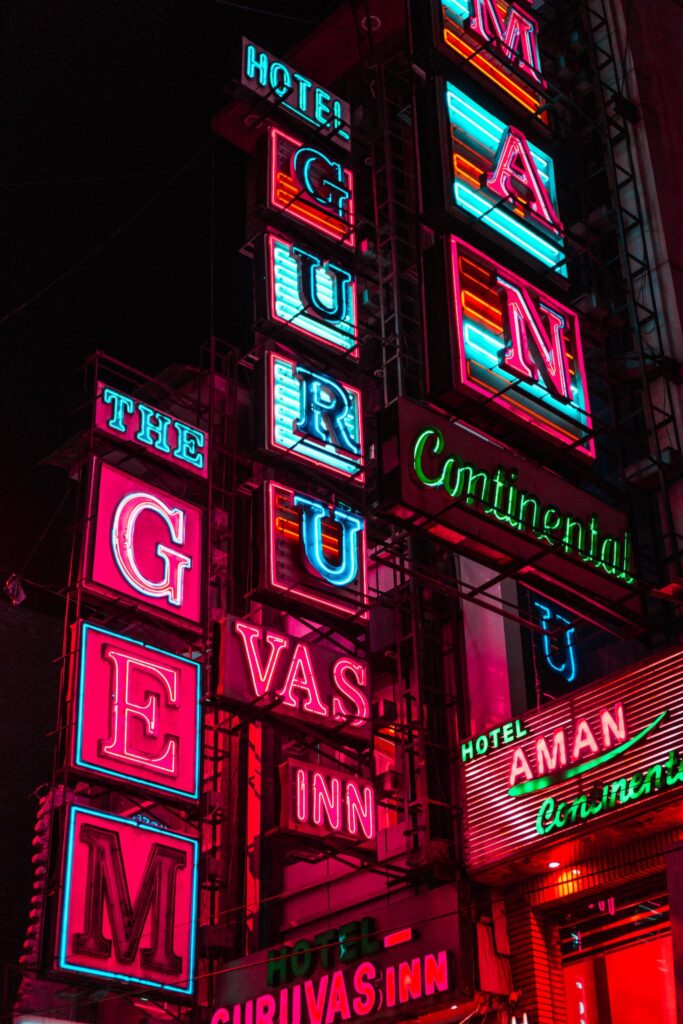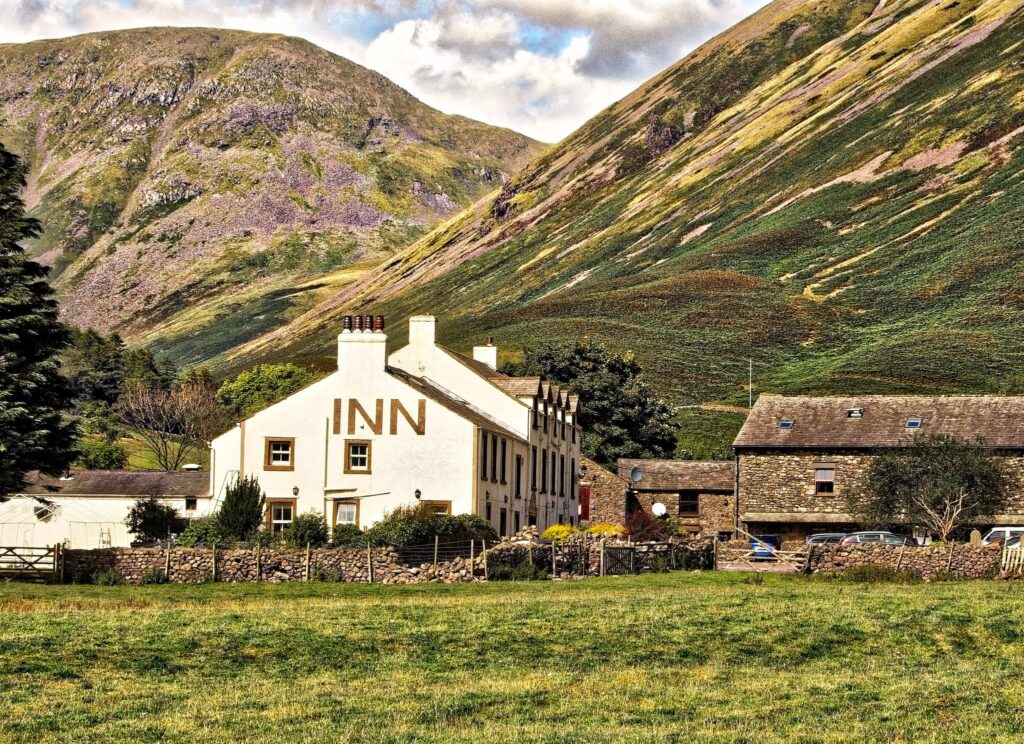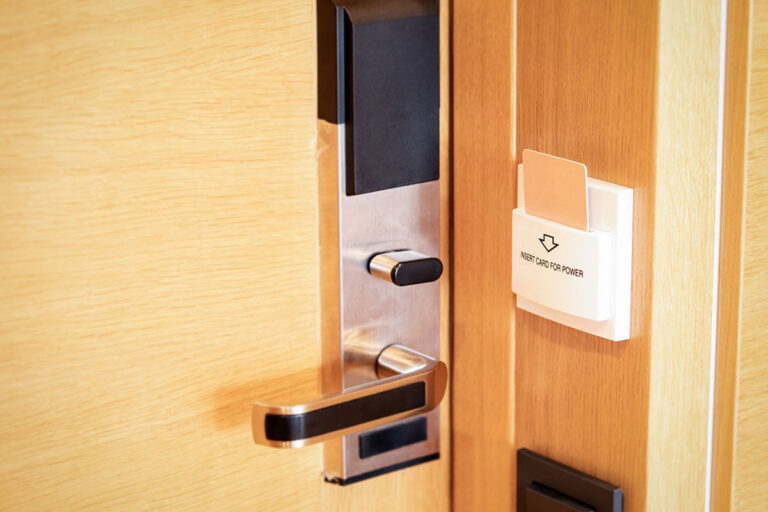What’s the Difference between a Hotel And an Inn?

Inns are smaller and have fewer features than hotels, often lacking a restaurant but offering additional services such as local tours and event planning. While hotels are typically found in high-travel areas, inns cater to a more leisurely crowd and are often located off highways.
When it comes to choosing accommodations, understanding the differences between hotels and inns is essential in making an informed decision. Both options offer varying experiences for travelers, each with its unique charm and amenities.
Hotels are known for their larger scale and extensive facilities, catering to the needs of diverse guests, while inns provide a more intimate and personalized setting for a relaxing stay.
By exploring the features and characteristics of each, travelers can ensure they find the perfect lodging option to suit their preferences and needs during their travels.
Navigate Where You Want:
- Key Characteristics Of Hotels
- Defining Features Of Inns
- Room And Concierge Services
- Dining And Amenities
- Target Audience And Location
- Personal Touch In Inns
- The Cosmopolitan Hotel Ambiance
- Hotels: Premium Prices For Luxury
- Inns: Affordable Charm
- Hotels: Modern And Historic Edifices
- Inns: Traditional And Quaint Structures
- Social Environment In Hotels
- Intimate Settings In Inns
- Urban And Accessible Hotels
- Inns: Off The Beaten Path
- Chain Hotels And Independents
- Inns: Often Family-run Businesses
- Hotel Chains: Global Reach
- Boutique Inns: Localized Service
- Frequently Asked Questions
- How Is An Inn Different From A Hotel?
- What Is The Difference Between Hotel And Lodge?
- Why Are Hotels Called Inns?
- What’s The Difference In A Hotel And A Motel?
- Conclusion
Key Characteristics Of Hotels

Hotels are typically found in high-traffic areas, featuring multiple floors and rooms for accommodating a large number of guests. They offer a wide range of amenities including restaurants, gyms, pools, and conference facilities.
On the other hand, inns are usually smaller in size with a more personalized and intimate atmosphere. They are often situated in rural or leisurely locations off highways, providing a more relaxed lodging experience.
Defining Features Of Inns

Inns are typically smaller than hotels and have fewer features. They may offer room service, but they typically do not have a restaurant or other amenities. Unlike B&Bs, inns tend to offer more services such as local tours and event planning.
Inns are typically found off highways, catering to a more leisurely crowd and providing personalized services to their guests.
Room And Concierge Services
Hotels typically offer room service and have a dedicated concierge to assist guests with various needs. They often provide a wide range of amenities, such as restaurants and recreational facilities, to cater to the needs of travelers.
On the other hand, inns may offer limited room service and focus more on providing local expertise to guests. Inns tend to have a more personalized approach, offering services such as local tours and event planning to enhance the guest experience.
Dining And Amenities
Hotels typically offer on-site restaurants and a wide range of recreational facilities such as gyms, swimming pools, and spas to cater to the needs of diverse travelers.
On the other hand, inns focus on offering home-style meals and creating a cozy, intimate atmosphere for their guests. They may not have the extensive amenities usually found in hotels, but they strive to provide a more personalized and intimate experience for their visitors.
Target Audience And Location
Hotels cater to a diverse clientele, including business and leisure travelers, offering a range of amenities such as conference facilities, restaurants, and bars.
In contrast, inns cater to a more leisurely crowd and often boast unique and intimate settings. They are typically found off highways and may offer services like local tours and event planning.
Furthermore, hotels are commonly situated in high-travel areas, while inns tend to attract guests seeking a more peaceful and rustic experience.
Personal Touch In Inns
Inns are typically smaller than hotels and have fewer features. They may offer room service, but they typically do not have a restaurant or other amenities. Unlike B&Bs, inns tend to offer more services such as local tours and event planning.
Inns carry a homely ambiance and provide a local charm due to their smaller guest capacity, creating a more personalized and intimate atmosphere for guests.
The Cosmopolitan Hotel Ambiance
When it comes to the cosmopolitan hotel ambiance, a professional environment is maintained, ensuring a standardized experience for all guests.
The corporate facilities available cater to the diverse needs of business travelers, providing a seamless and efficient environment for corporate events and meetings.
Hotels: Premium Prices For Luxury
When comparing hotels and inns, it’s important to note the differences in room types and prices. Hotels typically offer a range of room types, from standard to luxury, catering to different budgets.
Premium prices in hotels are usually justified by the luxurious amenities and services provided, such as spas, concierge, and fine dining options.
On the other hand, inns may offer a more limited range of room types and prices. They often provide a more personalized experience, focusing on value-added services such as local tours and event planning, rather than extensive luxury facilities.
While both types of accommodation have their unique appeal, travelers can choose based on their individual preferences and priorities.
Inns: Affordable Charm
Inns are typically smaller than hotels and have fewer features. They may offer room service, but they typically do not have a restaurant or other amenities. Unlike B&Bs, inns tend to offer more services such as local tours and event planning.
Inns are typically found in more leisurely locations and cater to a different crowd than hotels.
Additionally, inns provide a more inclusive experience, often located in rural or off-highway areas, offering a more personal and intimate atmosphere.
Their competitive pricing and charm make them an attractive option for travelers looking for a unique and affordable stay.
Hotels: Modern And Historic Edifices
Hotels and inns vary in architectural diversity, with hotels often comprising modern and historic edifices. The cultural significance of grand hotels lies in their majestic presence, representing opulence and offering luxury amenities.
On the other hand, inns tend to exhibit a more intimate and cozy atmosphere, typically situated in rural locations. Inns may offer room service, local tours, and event planning, catering to a leisurely crowd.
Unlike hotels, inns do not usually feature extensive amenities such as restaurants, making them smaller in scale compared to hotels.
Inns: Traditional And Quaint Structures
When it comes to inns, they are typically smaller than hotels and have fewer features. They may offer room service, but they typically do not have a restaurant or other amenities.
Unlike B&Bs, inns tend to offer more services such as local tours and event planning. Inns are typically smaller than hotels and have fewer features.
In terms of historical roots, inns often have rustic and cultural designs, providing a traditional and quaint lodging experience for travelers.
Social Environment In Hotels
Inns are typically smaller than hotels and have fewer features. They may offer room service, but they typically do not have a restaurant or other amenities. Unlike B&Bs, inns tend to offer more services such as local tours and event planning. Inns are typically smaller than hotels and have fewer features.
Hotels are typically found in high-travel areas, while inns serve a more leisurely crowd, and are often found off of highways.
Some inns are situated beside the roads and highways. Inns are smaller than hotels and motels and have a more personal and intimate atmosphere.
They often have fewer rooms and amenities, but offer a higher-tier guest experience with enhanced amenities and services for guests.
Lodges are typically smaller, more intimate establishments that provide basic amenities such as beds, bathrooms, and sometimes kitchenettes. Hotels, on the other hand, are larger establishments that offer comprehensive amenities and services.
Intimate Settings In Inns
Inns are typically smaller than hotels and offer a more intimate setting. They focus on providing a community feel with more guest interaction and shared spaces.
Inns may not have as many amenities as hotels but often compensate with local tours and event planning services. They are commonly found off highways and cater to a more leisurely crowd, whereas hotels are typically located in high-travel areas.
It’s important to note that both hotels and inns offer lodging, but their size, amenities, and target clientele set them apart.
Urban And Accessible Hotels
When looking for urban and accessible accommodations, hotels and inns both offer convenient options. Hotels located in city centers and near airports cater to the transit and exploration needs of travelers.
With their high-travel area presence, hotels provide a wide range of features and services to meet the requirements of a diverse clientele. On the other hand, inns are often found off highways and serve a more leisurely crowd.
Typically smaller establishments and inns offer a more intimate atmosphere with fewer amenities and rooms compared to hotels. However, inns provide a personalized experience and may offer additional services such as local tours and event planning to enhance the stay of their guests.
Inns: Off The Beaten Path
When it comes to accommodations, inns typically differ from hotels in various aspects. Inns are usually smaller and cozier, offering a more personalized and intimate experience. These establishments can often be found in the countryside and secluded areas, emphasizing relaxation away from the city buzz.
While inns may offer room service, they generally lack a restaurant or other extensive amenities. Instead, they focus on providing local tours and event planning, catering to a more leisurely crowd.
On the other hand, hotels are commonly located in high-travel areas, catering to a broader range of guests and offering a wide array of facilities and services.
Chain Hotels And Independents
Inns are typically smaller than hotels and have fewer features. They may offer room service, but they typically do not have a restaurant or other amenities. Unlike B&Bs, inns tend to offer more services such as local tours and event planning. Inns are typically found off highways, serving a more leisurely crowd, while hotels are located in high-travel areas.
The difference between motels and hotels primarily lies in their design and amenities – motels are designed for motorists and often have exterior entrances, while hotels are large enclosed buildings.
In comparison, an inn would be a smaller, more intimate establishment that offers lodging and food in a rural location.
Inns: Often Family-run Businesses
Inns are often family-run businesses, providing a more personal touch to the guest experience. Owner-operated establishments ensure personal involvement in guest interactions and are known for their intimate atmosphere.
This allows for a more customized and tailored experience for the guests. Inns typically offer fewer amenities compared to hotels and may not have features such as restaurants or room service. While they may lack certain facilities, they often make up for it with their unique charm and personalized service.

Credit: amenitiz.com
Hotel Chains: Global Reach
Inns are typically smaller than hotels and have fewer features. They may offer room service, but they typically do not have a restaurant or other amenities. Unlike B&Bs, inns tend to offer more services such as local tours and event planning.
Inns are typically found off highways, serving a more leisurely crowd, while hotels are usually in high-travel areas. Also, inns generally have a more personal and intimate atmosphere compared to hotels, often offering a more unique and personalized experience for guests.
Boutique Inns: Localized Service
Inns are typically smaller than hotels and have fewer features. They may offer room service, but they typically do not have a restaurant or other amenities. Unlike B&Bs, inns tend to offer more services such as local tours and event planning.
Inns are typically smaller than hotels and have fewer features. They are often found off of highways, serving a more leisurely crowd. Some may offer tailored offerings based on region, making their services more unique to the location.
Frequently Asked Questions
How Is An Inn Different From A Hotel?
Inns are smaller than hotels with fewer amenities, often lacking restaurants and room service. They offer a more intimate atmosphere and may provide local tours and event planning. Inns are typically found in leisurely locations, away from high-travel areas.
What Is The Difference Between Hotel And Lodge?
Hotels are larger, offering luxurious amenities like spas and restaurants. Lodges are smaller, and more intimate, with basic amenities like beds and bathrooms.
Why Are Hotels Called Inns?
Hotels are typically found in high-travel areas, while inns cater to a leisurely crowd and are often situated off highways. Inns tend to be smaller and offer more personalized services such as local tours and event planning. Unlike hotels, inns may lack full restaurant facilities.
What’s The Difference In A Hotel And A Motel?
Hotels are larger, with more amenities, while motels are suitable for motorists with exterior room entrances. Inns are smaller, cozier, and provide a more personal, intimate atmosphere, often located off highways.
Conclusion
Inns and hotels offer different experiences, catering to diverse traveler needs. While inns provide a more intimate and personalized atmosphere with local services, hotels are often located in high-travel areas and offer more amenities and a larger scale.
Understanding these distinctions can help travelers choose accommodations that best suit their preferences and needs.
Also Read:
- What is the Difference Between a Hotel And a Resort?
- What Special Requests to Ask for at Hotels
- Why are Accessible Hotel Rooms Cheaper
- What is Self Parking at a Hotel
- What is a Houseman in a Hotel
- What is a Deluxe Room in a Hotel
- Is Days Inn a Good Hotel
- What is on the Go Breakfast at Hotels
- What is a Terrace in a Hotel
- What is a Select Service Hotel





